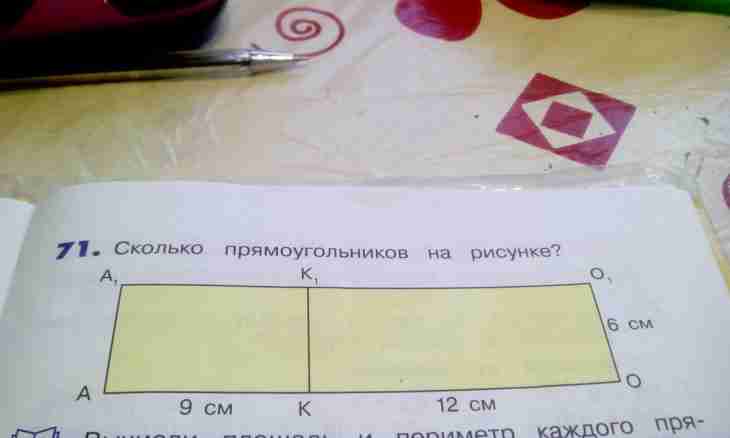Not only pupils at geometry lessons face a task to find perimeter or the area of a polygon. Its time it happens to solve also to the adult. Whether you had to count necessary quantity of wall-paper for the room? Or, maybe, you measured the extent of the seasonal dacha to fence it with a fence? So knowledge of fundamentals of geometry is sometimes irreplaceable for implementation of important projects.
It is required to you
- - pencil;
- - ruler.
Instruction
1. The perimeter of a polygon is equal to the sum of lengths of all its parties. Measure by a line of length of the parties of a polygon. Put among themselves the received values. It will also be polygon perimeter. For example, for a triangle with the parties of 7, 3 and 5 cm, the perimeter will be equal to 7+3+5=15 cm.
2. The area of a rectangle is equal to the work of its parties. Measure by a ruler length and width of a rectangle. Increase length by width. You receive the area of a rectangle. For example, for a rectangle with the parties of 5 and 6 cm, the area is equal to 5∙6=30 cm².
3. The area of a parallelogram is equal to the work of its party on height which is carried out to this party. Carry out parallelogram height. Measure by a ruler height and length of the party to which this height is carried out. Increase the received values. You receive the area of a parallelogram. For example, for a parallelogram with a length of party of 12 cm and height lowered on this party 4 cm long, the area is equal to 12∙4=48 cm².
4. The area of a triangle is equal to a half of the work of its party on height which is carried out to this party. Carry out triangle height. Measure by a ruler height and length of the party to which height is carried out. Increase the received values. Divide the work into 2. You receive the area of a triangle. For example, for a triangle with the party of 10 cm and height which is carried out to this party 6 cm long, the area is equal (10+6): 2=8 cm².
5. The area of a trapeze is equal to the work of the half-sum of its bases on height. Carry out trapeze height, measure it. Measure lengths of the bases of a trapeze. Put lengths of the bases. Divide the received sum into 2. Increase result by height length. You receive the area of a trapeze. For example, for a trapeze with the bases of 12 and 16 cm and 7 cm high, the area is equal (12+16): 2∙7=98 cm².
6. To find the area of a polygon with 5 and more parties, break it into several triangles, find the area of everyone and put the received values together. You receive the area of this polygon.

